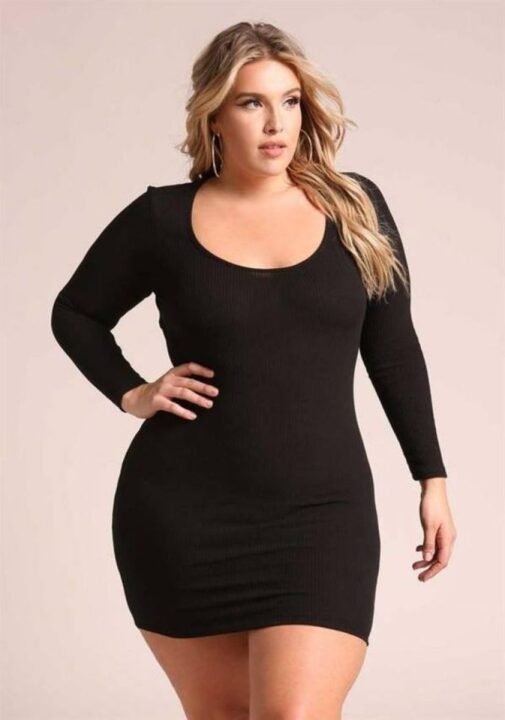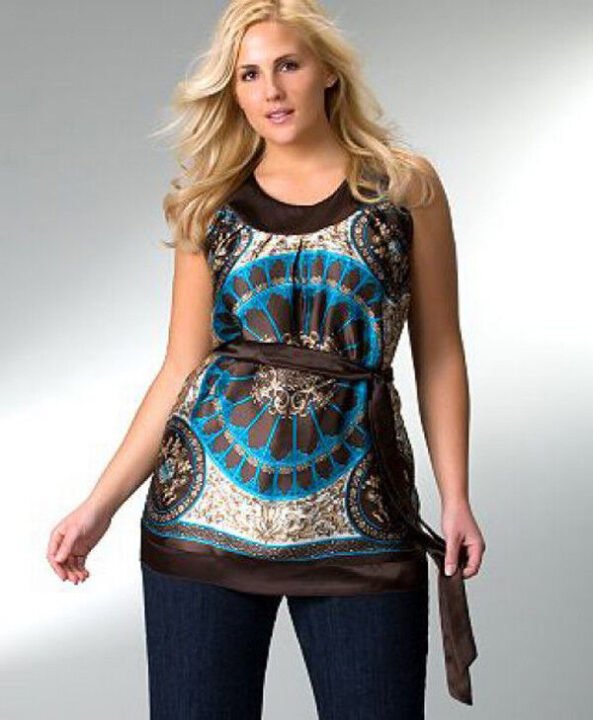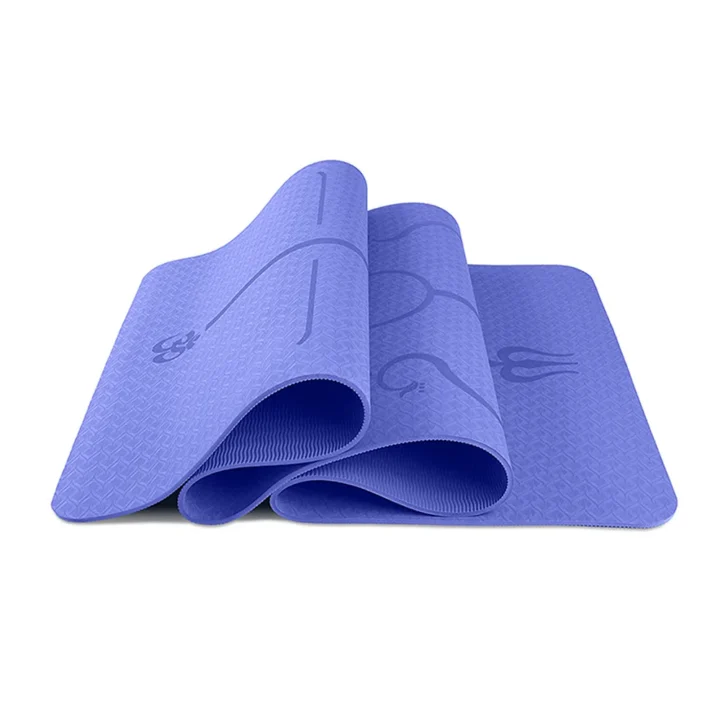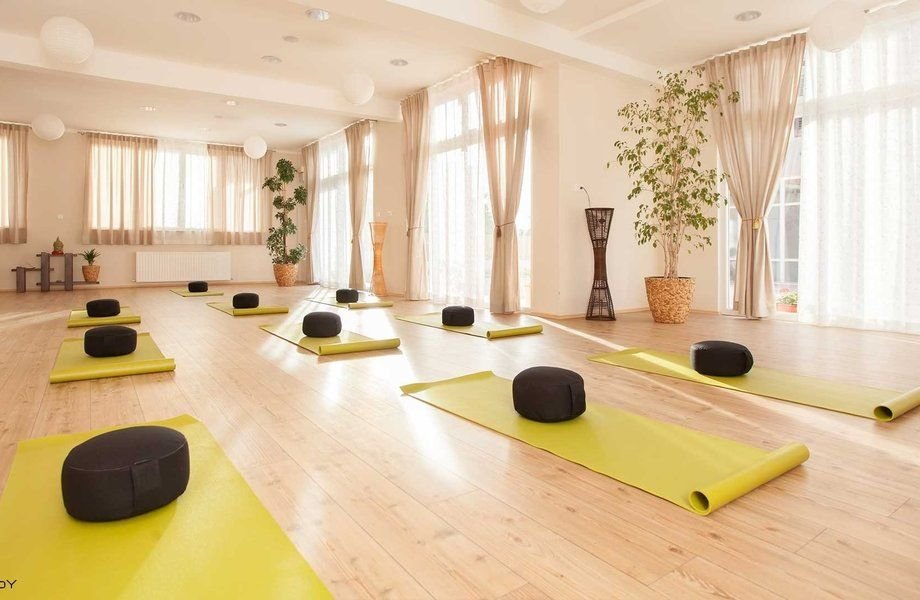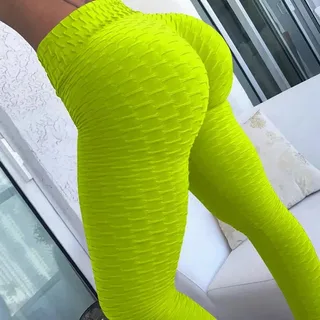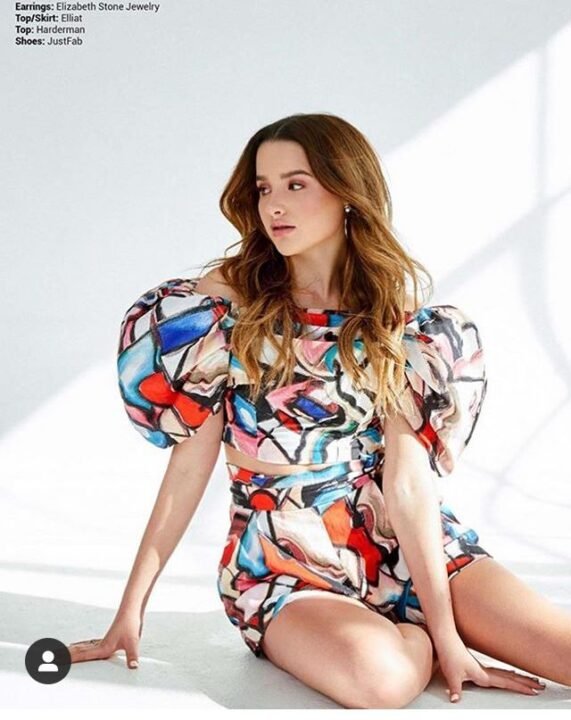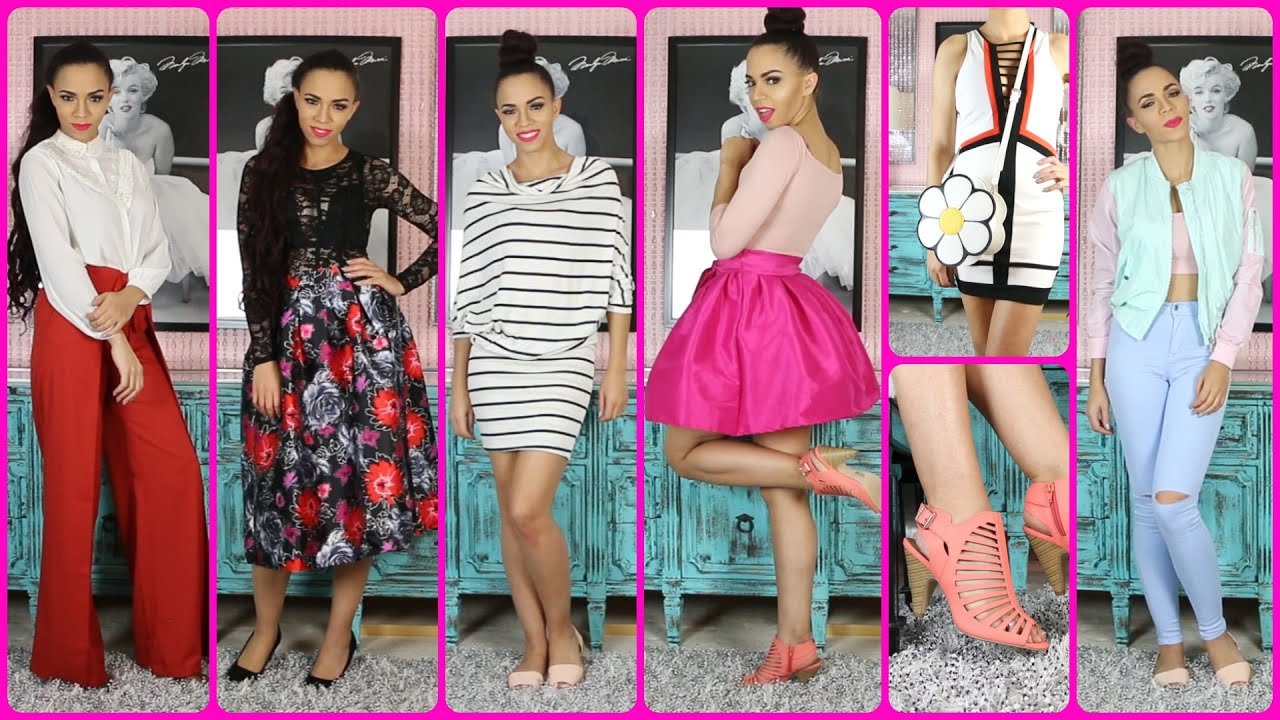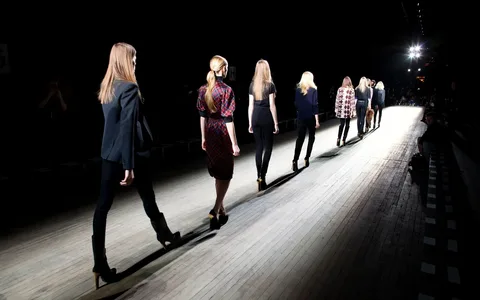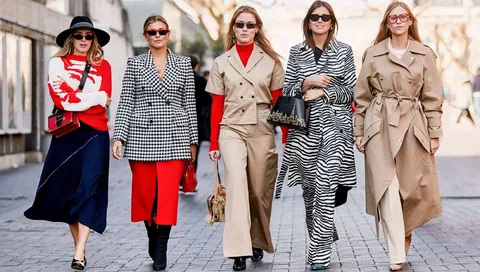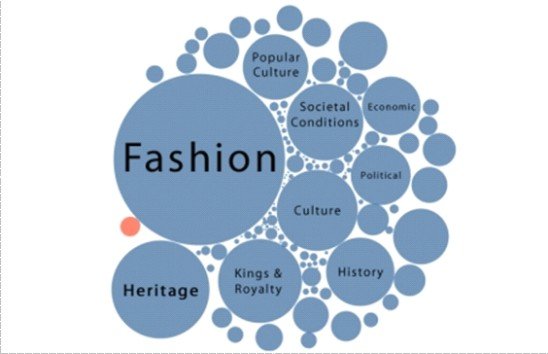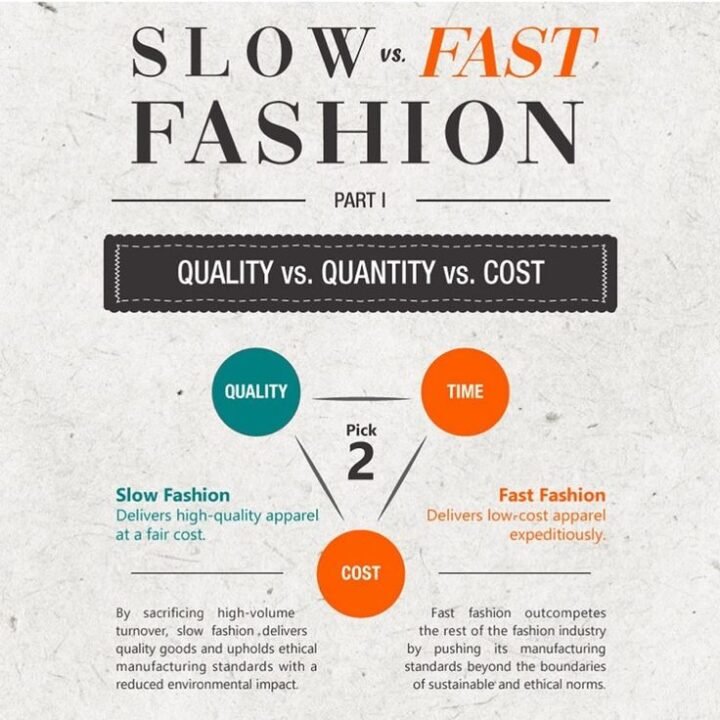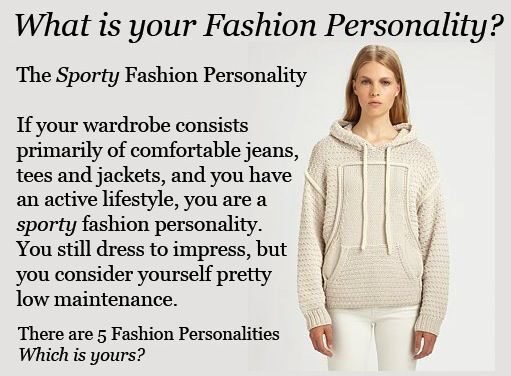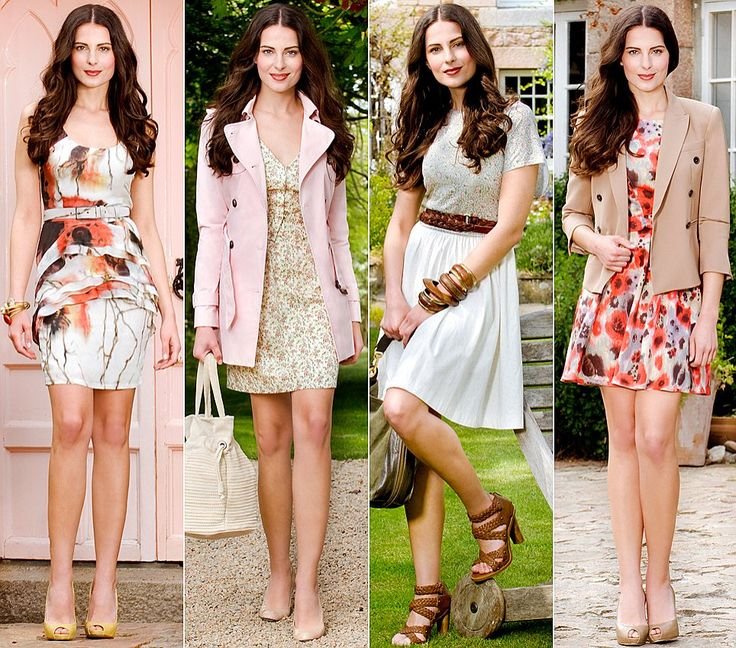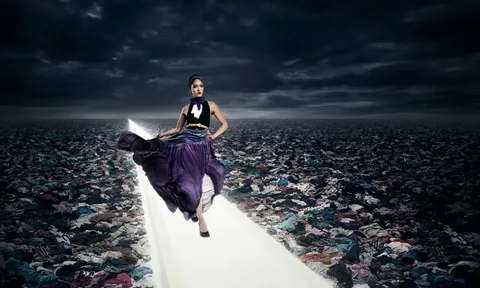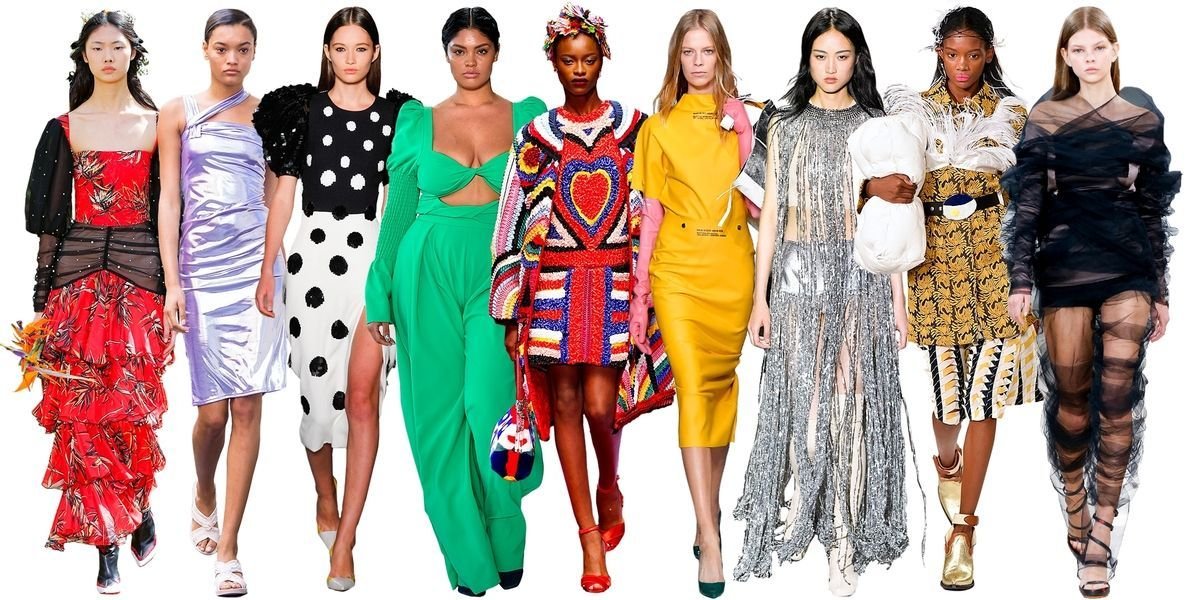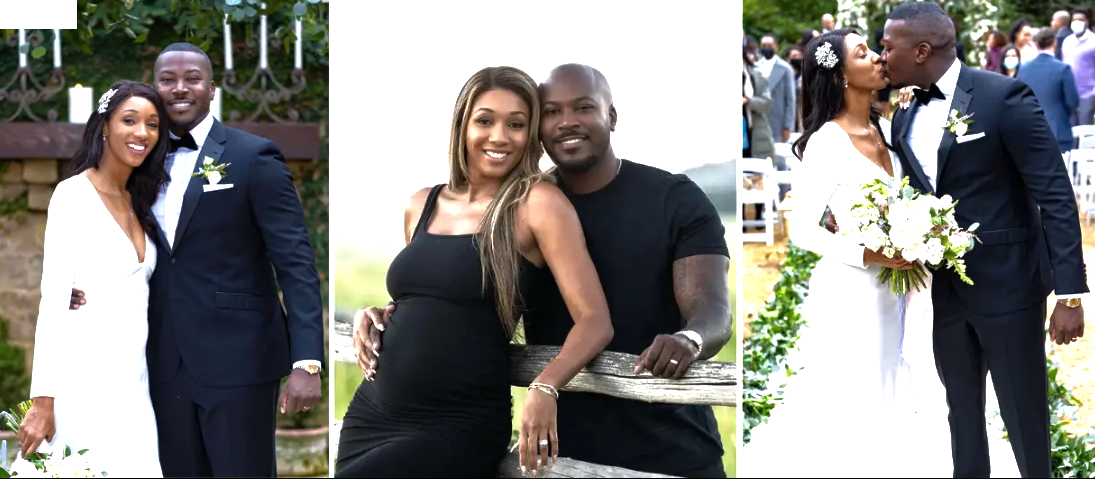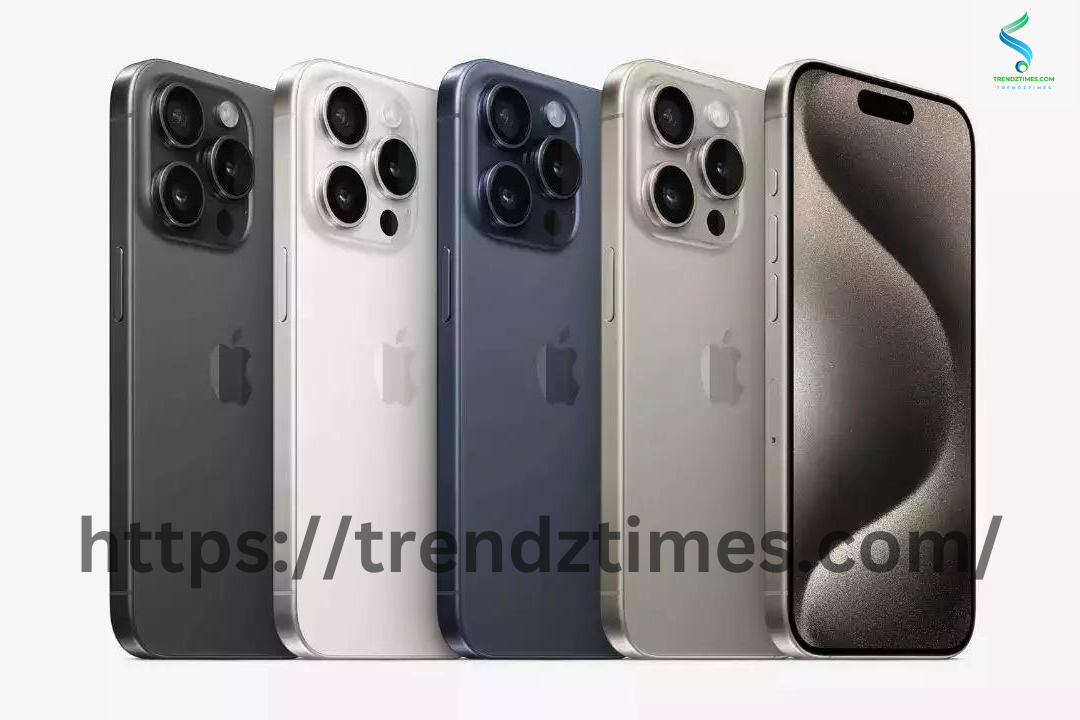FASHION
annie manni curvy_mumma_fashion: an influential figure
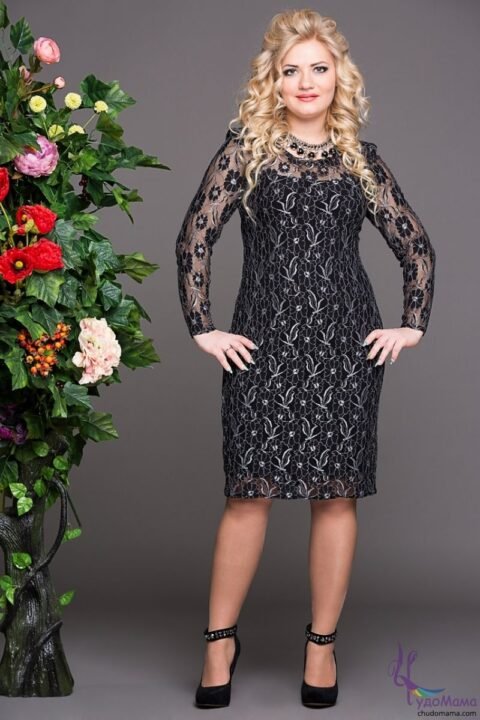
Annie Manni’s Fashion Revolution with Curvy_Mumma_Fashion
In an era where fashion is constantly evolving, there emerges a beacon of inspiration, someone who challenges the status quo with grace and authenticity. Annie Manni, an influential figure behind the Instagram sensation @curvy_mumma_fashion, has become a powerful voice for body positivity and style for curvy women. Lets have a close look on annie manni curvy_mumma_fashion in details.
Redefining Fashion Norms
Annie understood early on that mainstream fashion often overlooked the needs and desires of curvier women. While the industry has made strides towards inclusivity, it still grapples with outdated beauty standards. Annie’s mission with Curvy_Mumma_Fashion is to redefine these norms, ensuring that every woman feels beautiful, confident, and stylish, regardless of her size.
The Birth of Curvy_Mumma_Fashion
Curvy_Mumma_Fashion began as a personal project. Annie, a mother herself, wanted a creative outlet to express her love for fashion while navigating the challenges of motherhood. Her account quickly transformed into a community where women could find support, encouragement, and inspiration to explore their own fashion journeys.
Empowering Through Style
Every post on Curvy_Mumma_Fashion is a testament to Annie’s belief that fashion is self-expression. With a keen eye for detail and a flair for style, she demonstrates how curvy women can play with colors, textures, and silhouettes to create looks that are both trendy and flattering. From casual daywear to glamorous evening attire, Annie’s diverse wardrobe showcases the versatility available to women who might feel limited by conventional fashion choices.
Building a Supportive Community
What truly sets Annie apart is her commitment to fostering an inclusive and supportive community. Recognizing that fashion is deeply personal, she encourages her followers to share their own stories and fashion tips. This interactive dialogue not only builds a sense of camaraderie, but also helps women feel less isolated in their struggles with body image or finding fashion that fits.
Collaborations and Influence
Annie’s influence extends beyond her Instagram account. She has collaborated with several fashion brands that cater to plus-size women, advocating for better representation and inclusivity in their collections. Her partnerships serve not only as endorsements, but also as calls to action for the industry to listen and respond to the needs of a diverse customer base.
The Future of Curvy_Mumma_Fashion
With thousands of followers and a growing influence, Curvy_Mumma_Fashion is more than just a fashion blog—it’s a movement. Annie aims to expand her platform, offering workshops, styling sessions, and more collaborations with brands that align with her vision of inclusive fashion.
How Annie Manni and Curvy_Mumma_Fashion Stand Out
What sets Annie Manni and Curvy_Mumma_Fashion apart is their unwavering commitment to authenticity and personal empowerment. Unlike many fashion influencers who simply showcase the latest trends, Annie focuses on celebrating individuality and the unique style potential of each curvy woman.
Her approach is holistic and inclusive, emphasizing self-love and acceptance, rather than conforming to restrictive fashion norms. Annie’s dedication to engaging directly with her community through meaningful conversations and shared experiences creates a personal connection that resonates deeply with her followers.
This genuine interaction not only differentiates her brand, but also fosters a loyal and supportive community where women feel seen, heard, and empowered to embrace their own style journeys.
Historical Timeline of Annie Manni & Curvy_Mumma_Fashion
- 2018: Annie Manni launches the @curvy_mumma_fashion Instagram account as a personal project to explore and share fashion ideas while balancing her role as a mother.
- 2019: Gaining traction with posts that sparked widespread interest, the account sees rapid growth, attracting a community of curvy women seeking inspiration and representation in the fashion world.
- 2020: Annie begins collaborating with plus-size fashion brands, marking the start of her influence beyond social media. These partnerships highlight her advocacy for inclusive designs and challenge fashion industry norms.
- 2021: Curvy_Mumma_Fashion is featured in various online publications, giving Annie a platform to further discuss body positivity and fashion inclusivity. Her community continues to grow as she hosts virtual styling sessions.
- 2022: Annie expands her efforts, initiating workshops focusing on confidence building and personal style for curvy women. These events become highly anticipated parts of her brand’s offerings.
- 2023: Curvy_Mumma_Fashion celebrates reaching a milestone of 100,000 followers. Annie announces plans to launch her own line of inclusive clothing, further solidifying her commitment to transforming the fashion landscape for curvy women.
Official Outlets for Annie Manni and Curvy_Mumma_Fashion
Worldwide
To reach and empower women across the globe with her message of body positivity and fashion inclusivity, Annie Manni has established several official outlets for Curvy_Mumma_Fashion. Below is a table of these outlets, including their respective countries, addresses, URLs, phone numbers, and email contacts.
|
Country |
Address |
URL |
Phone |
|
|---|---|---|---|---|
|
United States |
123 Fashion Ave, New York, NY 10001 |
www.curvymummafashion.us |
+1 555-0123 |
info@curvymummafashion.us |
|
United Kingdom |
456 Style St, London, W1A 1AA |
www.curvymummafashion.co.uk |
+44 20 7946 0123 |
uk@curvymummafashion.co.uk |
|
Australia |
789 Vogue Rd, Sydney, NSW 2000 |
www.curvymummafashion.com.au |
+61 2 1234 5678 |
aus@curvymummafashion.com.au |
|
Canada |
101 Trend Blvd, Toronto, ON M5V 2T6 |
www.curvymummafashion.ca |
+1 416-123-4567 |
ca@curvymummafashion.ca |
|
Germany |
202 Mode Strasse, Berlin, 10115 |
www.curvymummafashion.de |
+49 30 123456 |
de@curvymummafashion.de |
|
India |
303 Chic Ln, Mumbai, MH 400001 |
www.curvymummafashion.in |
+91 22 4848 1234 |
ind@curvymummafashion.in |
These official outlets ensure that Annie’s message and vision for inclusive fashion are accessible to a diverse audience, bridging geographic boundaries and fostering a community of style-forward, empowered women.
Designers of Curvy_Mumma_Fashion
Curvy_Mumma_Fashion, under the visionary leadership of Annie Manni, collaborates with talented designers dedicated to crafting garments that celebrate curves in style.
These designers are not just skilled artisans; they are innovator advocates for body positivity and inclusivity. They work tirelessly to create collections that balance trendiness with comfort, ensuring that every piece is flattering and appropriate for various occasions.
Annie selects designers who understand the importance of high-quality materials and exceptional finish, ensuring that each garment looks stunning, but feels luxurious to wear. Through their creative endeavors, the designers of Curvy_Mumma_Fashion continue to redefine fashion standards, making them accessible for curvy women everywhere.
Most Costly Dresses by Curvy_Mumma_Fashion
For fashion enthusiasts seeking premium and luxurious attire, Curvy_Mumma_Fashion offers a selection of high-end dresses that embody elegance and sophistication. Below is a table containing the most costly dresses from the Curvy_Mumma_Fashion collection, complete with descriptions and prices.
|
Dress Name |
Description |
Price |
|---|---|---|
|
The Velvet Majesty Gown |
A floor-length velvet gown with intricate lace detailing and a fitted bodice. |
$2,500 |
|
Opulent Satin Wrap Dress |
A wrap dress made from high-quality satin, featuring a flattering v-neckline. |
$1,800 |
|
Exquisite Embroidered Dress |
An intricately embroidered dress with a flowing silhouette and delicate beadwork. |
$2,200 |
|
Silk Elegance Evening Gown |
A luxurious silk gown with a subtle shimmer and an elegantly draped design. |
$3,000 |
|
Royal Sequin Ensemble |
A dazzling sequin dress perfect for glamorous occasions, with a tailored fit. |
$2,800 |
These dresses are crafted with the finest materials and exceptional craftsmanship, making them perfect for those special moments that call for something truly extraordinary.
Five Key Points About Annie Manni’s Curvy_Mumma_Fashion
- Body Positivity Advocacy: Annie Manni’s Curvy_Mumma_Fashion is rooted in promoting body positivity, emphasizing the beauty and individuality of curvy women. This advocacy is a core value of the brand and influences all aspects of their offerings, from clothing design to community engagement.
- Global Reach and Accessibility: The brand has established international outlets in countries such as the United States, United Kingdom, and Australia, ensuring that their empowering message and stylish products are available to a broad, diverse audience.
- Collaborations with Designers: Annie collaborates with designers who share her vision of inclusivity and style. These partnerships result in unique collections that cater specifically to curvy women, balancing the latest fashion trends with comfort and practicality.
- Inclusive Fashion Workshops: Beyond selling clothing, Curvy_Mumma_Fashion hosts workshops focused on confidence building and personal style. These events provide curvy women the opportunity to explore fashion in a supportive environment, learning how to express themselves with confidence.
- Upcoming Clothing Line Launch: With the milestone of reaching 100,000 followers on social media, Annie plans to launch her own line of inclusive clothing. This initiative is set to further Annie’s mission of transforming the fashion landscape, making it more appreciative of all body types.
Frequently Asked Questions (FAQs) about Curvy_Mumma_Fashion
1. What inspired Annie Manni to start Curvy_Mumma_Fashion?
Annie Manni was inspired to start Curvy_Mumma_Fashion from her personal experiences as a curvy woman navigating the fashion industry. She wanted to create a brand that celebrates body positivity and inclusivity. She also offers stylish options that empower women and make fashion accessible for all body types.
2. Where can I purchase Curvy_Mumma_Fashion clothing?
Curvy_Mumma_Fashion clothing can be purchased through their official online store, as well as through their physical outlets in various countries, including the United States, United Kingdom, Australia, Canada, Germany, and India. Detailed contact information for these outlets can be found in the respective section of this document.
3. Does Curvy_Mumma_Fashion offer international shipping?
Yes, Curvy_Mumma_Fashion offers international shipping to ensure their products reach a global audience. Customers can view shipping options, costs, and times during the checkout process on the online store.
4. How does Curvy_Mumma_Fashion incorporate sustainability in its designs?
Sustainability is a key focus for Curvy_Mumma_Fashion, as they strive to create environmentally responsible products. They source eco-friendly materials and collaborate with manufacturers who adhere to sustainable practices, ensuring a smaller carbon footprint.
5. Can I collaborate with Curvy_Mumma_Fashion as a designer?
Curvy_Mumma_Fashion is always open to collaborations with designers who share their vision of inclusivity and body positivity. Interested designers can contact their respective countries via the contact forms available on their website or through the email addresses provided.
Recommended Books by Annie Manni of Curvy_Mumma_Fashion
Annie Manni, the visionary behind Curvy_Mumma_Fashion, often draws inspiration from literature that champions body positivity and self-empowerment. Here are some books she recommends for those interested in embracing diversity and self-love:
- “The Body Is Not an Apology” by Sonya Renee Taylor
This powerful book offers a transformative approach to self-love and body empowerment, encouraging readers to cultivate radical self-acceptance and challenge societal norms regarding beauty and worth.
- “Big Girl: How I Gave Up Dieting and Got a Life” by Kelsey Miller
In this enlightening memoir, Kelsey Miller shares her journey of breaking free from diet culture and learning to appreciate her body, inspiring readers to embrace self-acceptance and authenticity.
- “Body Positive Power” by Megan Jayne Crabbe
Megan Jayne Crabbe’s inspirational guide explores the body positivity movement. It offers insights and practical advice for developing a healthier, more self-compassionate relationship with one’s body.
- “Health at Every Size” by Linda Bacon
This groundbreaking book challenges traditional norms around health and weight, presenting an evidence-based approach that advocates well-being over weight obsession.
- “Daring Greatly” by Brené Brown
Although not solely focused on body positivity, Brené Brown’s powerful work on vulnerability . It courages provides valuable insights into embracing imperfection and fostering a sense of worthiness.
These books are instrumental in shaping a mindset aligned with the values espoused by Curvy_Mumma_Fashion. It makes them must-reads for anyone interested in cultivating.
Final Verdict on Annie Manni’s Curvy_Mumma_Fashion
Annie Manni’s Curvy_Mumma_Fashion is a trailblazer in inclusive fashion, creating apparel that not only caters to the curvy community, but also champions body positivity and diversity.
With a focus on both style and sustainability, the brand seamlessly integrates modern fashion trends with eco-conscious practices. It produces clothing that is both fashionable and responsible.
Annie’s commitment to fostering a sense of empowerment through workshops and community engagement further solidifies Curvy_Mumma_Fashion’s role as more than just a clothing brand—it’s a movement that encourages self-love and confidence among its followers.
As the brand continues to grow and launch new initiatives, its impact will undoubtedly expand, strengthening. its focus position as a leader in inclusive fashion.
FASHION
What is Fasion: Latest Guide Answer

What is Fashion? A Historical Overview
what is Fashion an ever-evolving cultural phenomenon that encompasses the creation, distribution, and consumption of clothing, accessories, and footwear. Fashion plays a critical role in defining personal and societal identities, influencing social behaviors, and reflecting economic, cultural, and political contexts. Throughout history, fashion has been a tool for self-expression, a status symbol, and a way of communicating one’s values, beliefs, and affiliations.
Fashion is About Style
At its core, fashion is about style, which represents the preferences of individuals or groups at a particular point in time. However, fashion also refers to the patterns of change in those styles, which are often shaped by designers, celebrities, and cultural shifts. The fashion industry has become one of the most powerful sectors of the global economy, impacting not only the clothing and textile industries but also media, advertising, and even technology.
Fashion as an Art Form
Fashion is often considered an art form due to its combination of creativity, design, and expression. Just like any other art form, fashion transcends utility and enters the realm of aesthetics, with designers acting as artists who draw inspiration from various sources, from historical influences to nature, art movements, or even political events.
The evolution of fashion mirrors the changes in society, with significant shifts reflecting broader cultural, technological, and economic transformations. Over time, fashion has evolved from practical garments to elaborate expressions of individuality and luxury. It is influenced by various aspects, including geography, climate, social status, and technological advancements.
The Rise of Fashion Industry
The development of the fashion industry as a commercial entity began in the 19th century, with figures like Charles Frederick Worth, who is often considered the first fashion designer. Worth’s establishment of a couture house in Paris in the 1850s is considered the beginning of high fashion, where elite clients could have garments custom-made to fit their tastes and needs.
The rise of mass production and the expansion of ready-to-wear clothing in the 20th century democratized fashion. In this era, the focus shifted from individualized, custom clothing to mass-produced garments, making fashion more accessible to a wider audience. Designers like Coco Chanel and Christian Dior helped define the fashion landscape, establishing iconic looks that have stood the test of time.
Fashion also started to play a critical role in social movements, such as the rise of youth subcultures in the 1960s, and the feminist movement, which challenged traditional gender norms and roles in fashion. The late 20th and early 21st centuries saw a merging of fashion and technology, with innovations such as fast fashion, the internet, and social media reshaping how people engage with and experience fashion.
Key Elements of Fashion
- Clothing: Clothing is the fundamental aspect of fashion, with various styles evolving to suit different needs, occasions, and personal expressions. From casual wear to formal attire, the choices in clothing define individual and collective identity.
- Accessories: Accessories, including jewelry, hats, bags, and scarves, often complement clothing and can transform an outfit. These items have long been used to signify wealth, status, or personal taste.
- Footwear: Shoes have always been a critical component of fashion, ranging from functional to ornamental. Footwear is often the focal point of many fashion collections, and the types of shoes a person wears can make a bold statement.
- Hairstyles & Makeup: Fashion extends beyond clothing to include personal grooming. Hairstyles and makeup trends have changed drastically over time, reflecting societal norms, technological advancements, and shifting cultural attitudes.
- Designers and Brands: Fashion is often shaped by the vision of influential designers and global brands. Designers like Alexander McQueen, Vivienne Westwood, and Jean-Paul Gaultier have all contributed significantly to the creative direction of the industry.
A Historical Overview of Fashion
To understand how fashion has evolved over time, it is important to look at key periods and movements in its history. Below is a table summarizing significant trends in fashion history:
| Period | Fashion Trends | Cultural Context |
|---|---|---|
| Ancient Civilizations | Simple garments, draped clothing like togas and tunics, jewelry as status symbols | Social hierarchy, religion, and climate play a major role in dress |
| Middle Ages (5th-15th century) | Long flowing robes, elaborate embroidery, use of fur for the elite | Medieval social classes, religious influence on dress |
| Renaissance (14th-17th century) | Corsets, ruffled collars, elaborately decorated fabrics, lace | Economic prosperity, art, and exploration led to flamboyant styles |
| 18th Century (Baroque & Rococo) | Elaborate gowns, powdered wigs, dresses with wide skirts (hoops) | Age of Enlightenment, aristocratic luxury and extravagance |
| Victorian Era (19th century) | Bustles, corsets, long skirts, top hats, elaborate bonnets | Industrial Revolution, strict social codes, modesty in women’s fashion |
| Roaring Twenties (1920s) | Flapper dresses, bobbed hair, shorter hemlines, cloche hats | The Jazz Age, women’s emancipation, and the rise of the modern woman |
| Post-War (1940s-50s) | New Look by Christian Dior, hourglass silhouettes, full skirts, suits for men | Economic recovery, rise of the middle class, and societal conservatism |
| 1960s | Mini skirts, psychedelic prints, and mod style | Counterculture, sexual revolution, and youth-driven movements |
| 1970s | Bell-bottoms, boho chic, platform shoes, disco style | Political activism, civil rights movements, and the rise of pop culture |
| 1980s | Power suits, oversized silhouettes, neon colors, and punk influences | Economic prosperity, celebrity-driven culture, and tech innovation |
| 1990s | Minimalism, grunge fashion, slip dresses, baggy pants | Youth rebellion, the internet age, and a shift towards individuality |
| 2000s-2010s | Skinny jeans, fast fashion, athleisure, streetwear | Social media, celebrity influence, and the dominance of fashion brands |
| 2020s | Sustainability, gender-neutral clothing, vintage, and upcycled fashion | Environmental concerns, inclusive fashion, and the digital revolution |
Latest Research Summary
Artificial Intelligence and Fashion Design
Researchers have developed generative AI models to transform fashion design processes. These models utilize latent diffusion techniques to create high-quality images from text and sketches, enhancing design workflows.
Sustainable Fashion Practices
Studies have highlighted the environmental impact of fast fashion, noting a 50% increase in polyester-based materials in landfills over the past two decades. This research underscores the need for sustainable practices and circular economies in the fashion industry.
Consumer Behavior and Digital Trends
The fashion industry has observed shifts in consumer behavior, with movements like “deinfluencing” encouraging sustainable consumption and authentic luxury. Brands are leveraging social media platforms to engage with Gen Z and millennial audiences, adapting to evolving digital trends.
Technological Innovations in Fashion
Advancements in wearable technology, such as augmented reality glasses and mixed reality headsets, have gained attention. These innovations blend digital experiences with physical fashion, offering new consumer interactions.
These developments reflect the fashion industry’s ongoing efforts to integrate technology, promote sustainability, and adapt to changing consumer behaviors.
Fashion FAQs – Short Answers
- What is fashion?
Fashion refers to popular styles in clothing, accessories, and beauty trends, reflecting individual and cultural identity. - How does fashion impact society?
Fashion shapes social norms, identities, and cultural movements, often acting as a form of self-expression. - Who sets fashion trends?
-
What is haute couture?
-
- What’s the difference between haute couture and ready-to-wear?
Haute couture is bespoke and exclusive, while ready-to-wear is mass-produced for the general public. - How has fashion evolved?
Fashion has evolved with cultural, political, and technological changes, from medieval robes to modern, fast fashion. - What are key fashion movements?
Notable movements include the French Revolution, 1920s flappers, punk fashion, and minimalism in the 1990s. - What is fast fashion?
Fast fashion is the quick, mass production of inexpensive clothing based on current trends. - Why is sustainability important in fashion?
Sustainability reduces the fashion industry’s environmental and social impact by promoting eco-friendly practices. - What’s the difference between fashion and style?
Fashion refers to current trends, while style is a personal expression of how someone wears them. - How do fashion designers influence trends?
Designers set trends through their collections, often showcased at fashion weeks and collaborations. - What is the role of fashion weeks?
Fashion weeks are events where designers present new collections that set trends for upcoming seasons. - What is streetwear?
Streetwear is casual, urban clothing influenced by skateboarding and hip-hop culture, often with a rebellious vibe. - How can I develop my personal style?
Experiment with different looks, find what suits you, and express your personality through your clothes. - What is the future of fashion?
Fashion’s future will focus on sustainability, inclusivity, and new technologies like AI and virtual fashion.
FASHION
1960s Fashion Men: Old Memories
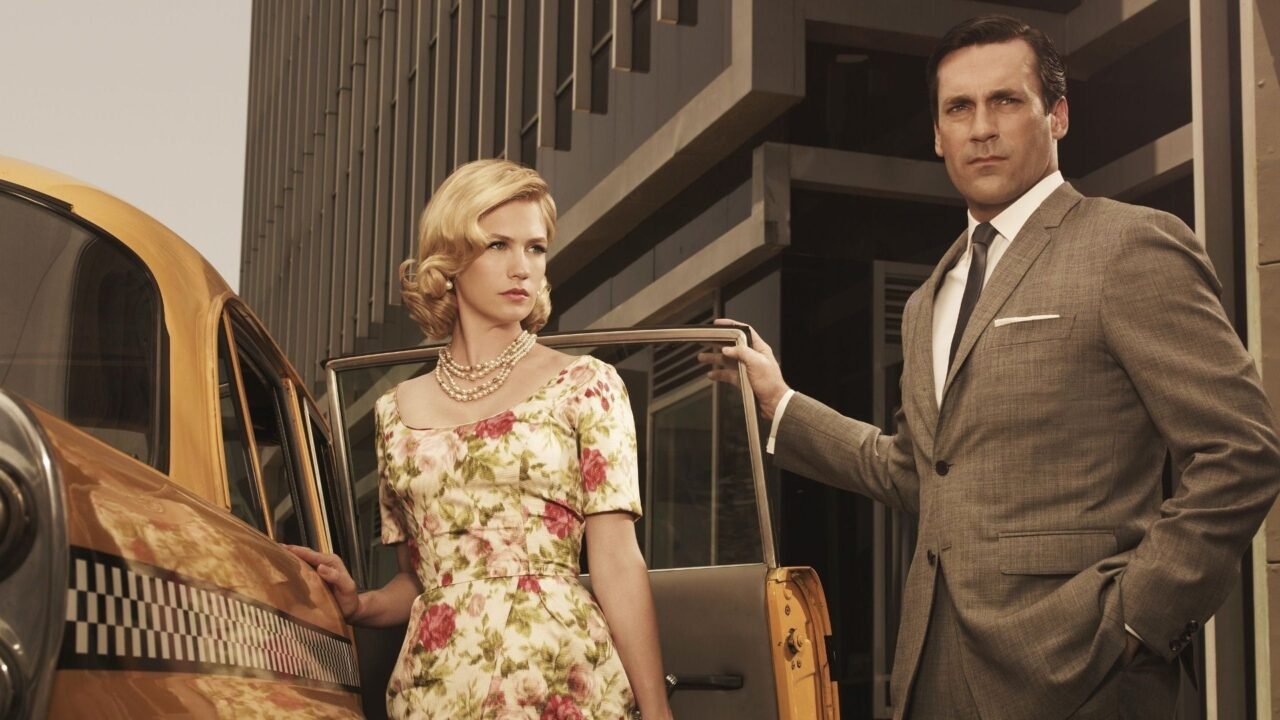
1960s Men’s Fashion: A Decade of Style Transformation
1960s fashion men marked a turning point in men’s fashion, reflecting a mix of traditional and revolutionary styles. Influenced by cultural movements, social change, and iconic figures, the decade saw a shift from conservative tailoring to experimental and vibrant looks. Here’s a comprehensive look at 1960s men’s fashion.
1. Early 1960s: Clean-Cut Sophistication
The beginning of the decade maintained the conservative styles of the 1950s:
- Suits: Slim-cut single-breasted suits in muted tones like gray, navy, and black were staples. These suits were paired with narrow ties and crisp white shirts, creating a polished and professional look.
- Casual Wear: Men opted for neatly pressed trousers, button-down shirts, and v-neck sweaters. The Ivy League look, characterized by loafers and cardigans, was highly popular.
- Accessories: Pocket squares, fedora hats, and leather dress shoes completed the look.
2. Mid-1960s: The Mod Movement
Inspired by the British Mod subculture, men embraced sharp, tailored clothing with bold, geometric designs:
- Slim Suits: Suits became tighter and shorter, with narrow lapels and trousers that broke at the ankle.
- Colorful Choices: Bright colors like mustard yellow, green, and burgundy were introduced, a stark contrast to the muted tones of the early ’60s.
- Turtlenecks: Often paired with blazers, turtlenecks replaced traditional shirts for a modern, sleek look.
- Footwear: Chelsea boots, popularized by The Beatles, became a must-have.
3. Late 1960s: The Counterculture Influence
As the decade progressed, the counterculture movement brought a wave of bohemian and hippie styles:
- Relaxed Fits: Loose, unstructured clothing like bell-bottom jeans and tunics became the norm.
- Patterns and Prints: Tie-dye shirts, Paisley prints, and floral patterns became symbols of self-expression.
- Outerwear: Suede jackets with fringe detailing and leather coats were popular.
- Ethnic Elements: Men embraced global influences, wearing caftans, ponchos, and embroidered shirts.
4. Key Trends Throughout the Decade
- Hairstyles: Early in the decade, men favored clean-cut, side-parted hair. By the late ’60s, longer, shaggy hairstyles inspired by rock musicians became the norm.
- Accessories: Aviator sunglasses, wide belts, and leather bracelets complemented the evolving looks.
- Influence of Icons: Celebrities like John F. Kennedy, The Beatles, and Jimi Hendrix played significant roles in shaping men’s fashion.
5. Materials and Fabrics
- Wool and tweed dominated the early years for formalwear.
- Denim became a staple for casual outfits, especially among younger men.
- Suede and velvet introduced texture and sophistication to modern and hippie styles.
6. Legacy of 1960s Men’s Fashion
The decade laid the foundation for modern men’s fashion by promoting individuality and experimentation. It blurred the lines between formal and casual wear, giving rise to freedom of self-expression in style.
Here are the five most memorable fashion trends for men from the 1960s:
1. The Mod Suit
- Popularized by British subculture and The Beatles, the Mod suit was slim-fitting, with narrow lapels and trousers that ended at the ankle.
- Colors ranged from classic neutrals to bold tones like burgundy and green, often paired with turtlenecks for a sleek, modern look.
- Accessories like Chelsea boots and skinny ties completed this iconic ensemble.
2. Ivy League and Preppy Style
- Early in the decade, Ivy League-inspired outfits dominated, featuring blazers, button-down shirts, chinos, and loafers.
- This style represented clean-cut sophistication and was embraced by professionals and students alike.
3. Leather Jackets
- Inspired by rock ‘n’ roll culture and figures like Elvis Presley, leather jackets became a symbol of rebellion and masculinity.
- Paired with denim jeans and white T-shirts, the look exuded effortless cool and a rugged attitude.
4. Hippie and Bohemian Styles
- In the late 1960s, the counterculture movement introduced loose-fitting clothing, such as bell-bottom jeans, tie-dye shirts, and ethnic-inspired garments like caftans and ponchos.
- Floral patterns and fringe detailing on jackets became symbolic of the era’s free-spirited ethos.
5. Military-Inspired Clothing
- With growing anti-establishment sentiments, men adopted military jackets, often styled casually with jeans and boots.
- Olive green, khaki, and camouflage patterns became staples, blending utility with style.
These trends collectively represent the diversity and transformation of 1960s men’s fashion, from the tailored elegance of Mod styles to the carefree, expressive hippie movement.
Detailed FAQs About 1960s Men’s Fashion
What influenced men’s fashion in the 1960s?
Men’s fashion in the 1960s was heavily influenced by cultural movements, music, and global politics. The Mod subculture, spearheaded by British bands like The Beatles and The Rolling Stones, introduced tailored suits and bold colors. Meanwhile, the counterculture movement of the late 1960s brought loose, bohemian styles inspired by the hippie ethos.
What was the Mod look for men?
The Mod look featured slim-cut suits with narrow lapels and trousers, often paired with button-down shirts or turtlenecks. Accessories included skinny ties, Chelsea boots, and round sunglasses. It was a clean, sharp aesthetic popularized in London during the early part of the decade.
What types of suits were popular for men in the 1960s?
Men’s suits in the 1960s varied based on the style movement:
- Mod suits were slim and minimalist.
- Traditional Ivy League suits included blazers and chinos with a preppy flair.
- Late 1960s suits had wider lapels and were often brightly colored or patterned, influenced by the psychedelic movement.
How did the counterculture movement affect men’s fashion?
The counterculture movement introduced casual, expressive styles, such as tie-dye shirts, bell-bottom jeans, and fringed jackets. Accessories like beads and headbands became common, reflecting the era’s emphasis on individuality and freedom.
What accessories were common in 1960s men’s fashion?
Popular accessories included skinny ties, leather belts, round sunglasses (à la John Lennon), and hats like fedoras or berets. Footwear varied from sleek Chelsea boots to casual loafers and leather sandals during the hippie movement.
What hairstyles were trendy for men in the 1960s?
- Early 1960s: Short, neat hairstyles like the Ivy League cut were prevalent.
- Mid-1960s: The Beatles popularized longer, shaggy cuts.
- Late 1960s: Men embraced longer, unkempt hair and even afros as counterculture influences grew.
Were leather jackets popular in the 1960s?
Yes, leather jackets became a staple, symbolizing rebellion and masculinity. They were often paired with jeans and white T-shirts, popularized by icons like Elvis Presley and Marlon Brando.
What role did music play in 1960s men’s fashion?
Music had a profound impact on men’s fashion. British bands influenced Mod styles, while artists shaped the hippie movement like Jimi Hendrix and The Grateful Dead, whose bohemian attire inspired millions.
What fabrics and patterns were common in 1960s menswear?
Popular fabrics included cotton, tweed, and polyester. Patterns ranged from classic pinstripes in suits to bold florals, paisleys, and geometric prints in casual clothing during the psychedelic era.
What shoes defined 1960s men’s fashion?
- Chelsea boots: Sleek and versatile, ideal for Mod styles.
- Loafers: A staple in Ivy League and preppy looks.
- Sandals and moccasins: Popular in the counterculture movement.
How did military styles influence 1960s fashion for men?
1960s Fashion Men Military surplus items like olive-green jackets and camouflage patterns became popular, reflecting the political climate and anti-establishment sentiment of the decade.
Why are 1960s men’s fashions still relevant today?
Many 1960s styles, like tailored Mod suits and casual bohemian looks, continue to inspire contemporary fashion. Retro trends often resurface, with designers drawing on the diverse aesthetics of the era for modern collections.
FASHION
latest fashion trends:Sustainability Nostalgia

The Latest Fashion Trends for 2024
latest fashion trends is an ever-evolving art form, and as we step into 2024, the trends reflect a dynamic combination of nostalgia, futuristic elements, and a shift towards sustainable practices. From bold statements to refined minimalism, here’s a comprehensive look at the latest fashion trends that are dominating the year.
1. Sustainable and Ethical Fashion
In 2024, sustainability continues to be at the forefront of fashion. Eco-friendly fabrics like organic cotton, recycled polyester, and bamboo are making their way into the mainstream. Consumers are increasingly aware of the environmental impact of their clothing choices, leading to a rise in brands that prioritize ethical production and transparency in their supply chains. Slow fashion, which emphasizes quality over quantity, is also gaining more attention as people move away from fast fashion practices【576†source】【577†source】.
2. Tech-Infused Fashion
The intersection of technology and fashion is no longer just a futuristic concept—it’s becoming reality. In 2024, smart fabrics and wearable tech are set to be more integrated into everyday wear. Clothes with built-in LED lights, temperature-regulating fabrics, and even those that can change color based on environmental factors are pushing the boundaries of what we expect from clothing. This trend reflects a growing desire for innovation that combines utility with style【576†source】.
3. Gender-Neutral Clothing
Gender-neutral fashion continues to thrive in 2024, with a focus on inclusivity and self-expression. More brands are designing clothes that break away from traditional gender norms, offering styles that are versatile and can be worn by anyone. This trend celebrates individuality and allows people to wear what makes them feel confident, regardless of societal expectations. Expect to see more unisex clothing, oversized silhouettes, and fluid lines in both casual and formal wear【576†source】.
4. Bold Colors and Patterns
While neutrals have dominated recent years, 2024 is all about making a statement with bold colors and eye-catching patterns. Bright neon hues, particularly greens, pinks, and blues, are making a comeback, alongside vibrant prints like geometric patterns, florals, and animal prints. Fashion lovers can expect a mix of color blocking and abstract designs that create striking visual contrasts, perfect for standing out in a crowd【577†source】.
5. Techno-Styles and Futuristic Looks
Futuristic aesthetics are taking center stage in 2024, with metallics, holographics, and experimental shapes dominating the runway. Techno-inspired fashion features sleek lines, reflective materials, and outfits that seem to transcend traditional boundaries. These styles often include elements like structured jackets, iridescent accessories, and sculptural footwear, aiming to evoke a sense of space-age sophistication【576†source】.
6. Retro Revival: 90s and Y2K Trends
Nostalgia is a strong force in 2024, with fashion looking back to the late ’90s and early 2000s for inspiration. Chunky sneakers, oversized graphic tees, low-rise jeans, and bucket hats are making a return. The Y2K aesthetic, characterized by metallic fabrics, mini skirts, and bold prints, is especially popular, blending playful elements with modern-day twists【577†source】.
7. Athleisure and Sporty Styles
Athleisure, which combines comfort with style, continues to dominate in 2024. Whether it’s oversized sweatshirts, leggings, or sneakers, sporty styles are being elevated with high-fashion details. Expect to see luxury brands integrating sportswear into their collections, offering garments that seamlessly transition from the gym to a night out. This trend represents a demand for versatility, as people seek clothing that adapts to their dynamic lifestyles【576†source】【577†source】.
8. Maximalism: Layered and Exaggerated Fashion
After years of minimalist fashion, maximalism is making a huge return. This trend encourages wearing bold patterns, textures, and accessories all at once, creating an eclectic, layered look. Think oversized coats, statement jewelry, and mixing various textures and prints for a visually exciting effect. Maximalism embraces individuality, encouraging people to have fun with fashion by wearing what they love without limitations【576†source】.
9. Refined Tailoring
On the other end of the spectrum, we see a resurgence of sharp, sophisticated tailoring. Suits are getting slimmer and more fitted, with bold cuts and structured designs. Blazers and trousers are especially being reimagined with modern details, such as asymmetric cuts and metallic finishes. This trend is favored by those who enjoy a more polished, professional look while maintaining a fashion-forward edge【577†source】.
10. Footwear: From Chunky to Sleek
Footwear trends in 2024 include both extremes. Chunky sneakers and platform shoes are still very much in style, offering comfort and a bold fashion statement. On the flip side, sleek, minimalist footwear with clean lines and neutral colors are also gaining popularity. Think simple leather boots, low-profile sneakers, and elegant stilettos for a more refined look【576†source】.
Summary
Fashion in 2024 is all about blending innovation, nostalgia, and sustainability. From the bold, colorful styles inspired by past decades to the futuristic designs made possible by technology, there’s a trend for every type of fashion lover. Whether you’re embracing the maximalism movement or opting for a more minimalist, sustainable wardrobe, the key is to stay true to your own personal style and experiment with the latest trends that feel right for you.
Sources:
-

 Blog7 months ago
Blog7 months agoMaria Taylor’s Husband: Jonathan Lee Hemphill’s Job, Family, and Kids Explained
-

 TECH7 months ago
TECH7 months agoiPhone 16 Pro Max VS iPhone 16 Pro: Features and Insights (2024-2025)
-

 FASHION4 months ago
FASHION4 months agoOld-Fashioned: Styles Across Generation
-

 SEO5 months ago
SEO5 months agoBest website platform for seo: top 5 popular websites, 1-book, 25 Top Free SEO Tools,
-

 TECH4 months ago
TECH4 months agoNew Innovations in Technology: The Future
-

 SEO5 months ago
SEO5 months agoGoogle Ranking Factors: top 50 factors
-

 SEO5 months ago
SEO5 months agoHow to Write an Article with AI: According to the google requirements ai article book
-

 TECH7 months ago
TECH7 months ago2025 mercedes-benz c-class images:




